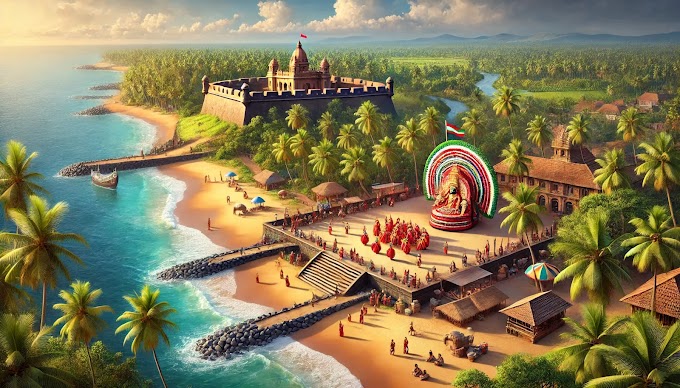Red Fort, or Lal Qila, stands as one of the most iconic landmarks of Delhi, representing the grandeur and legacy of the Mughal Empire. Built by Emperor Shah Jahan in 1639 after shifting his capital from Agra to Delhi, the fort served as the main residence for Mughal emperors for over 200 years. Made of red sandstone, the fort derives its name from its distinctive color and showcases the architectural brilliance of the Mughals. Spread across 255 acres, Red Fort is not only a symbol of Mughal architectural mastery but also an emblem of India’s struggle for independence. In 2007, it was designated as a UNESCO World Heritage Site.
History of Red Fort
Construction of Red Fort began in 1638 and was completed by 1648, taking almost 10 years. Designed by the architect Ustad Ahmad Lahauri, who also designed the Taj Mahal, this fort was intended to be the centerpiece of Shah Jahan’s new capital, Shahjahanabad. It served as the administrative and ceremonial hub of the Mughal Empire.
The fort's architecture is a blend of Mughal, Persian, Timurid, and Indian styles, with 2.5 kilometers of towering red sandstone walls that make it one of the largest and most impressive forts in India. Key attractions inside the fort include the Diwan-i-Am (Hall of Public Audiences) and Diwan-i-Khas (Hall of Private Audiences), where the emperor addressed his subjects and dignitaries. The famous Peacock Throne, later looted by Nadir Shah of Persia, once adorned the Diwan-i-Khas.
Over the centuries, Red Fort has been witness to numerous historical events, including the fall of the Mughal Empire after the 1857 Sepoy Mutiny, when the British took control. Since India's independence, the Prime Minister hoists the national flag every year from the Lahore Gate on August 15, marking India’s Independence Day.
Architectural Marvel
The Red Fort is an irregular octagon with towering walls reaching up to 33 meters on the riverside. Some of the most notable structures within the fort include:
- Rang Mahal: Known as the Palace of Colors, this building, once a harem, features intricate artwork and a central marble basin.
- Khas Mahal: The emperor’s private residence, divided into sections for sleeping, praying, and meetings.
- Moti Masjid (Pearl Mosque): A small yet serene white marble mosque built by Aurangzeb.
- Hayat Bakhsh Bagh: Translating to "Life-Giving Garden", it is a peaceful garden with water channels and fountains.
Why Visit Red Fort?
A visit to Red Fort offers a chance to experience the splendor of the Mughal Empire. Its architectural grandeur and historical significance make it one of India's most important landmarks. The light and sound show held in the evenings vividly brings to life the history of the Mughal era and is highly recommended. The fort’s expansive lawns, majestic buildings, and intricate craftsmanship will leave you in awe of Mughal artistry.
Best Time to Visit Red Fort
The best time to visit Red Fort is between October and March, when the weather in Delhi is pleasant. It is advisable to avoid visiting during the summer months (April to June) due to the extreme heat. Early mornings and late afternoons are ideal for avoiding crowds and enjoying the fort at its finest.
Timings and Entry Fees
- Timings: Open from 9:30 AM to 4:30 PM, closed on Mondays.
- Entry Fees:
- ₹35 for Indian citizens
- ₹550 for foreign tourists
- Free for children under 15 years of age
- The light and sound show ranges from ₹50 to ₹80 per ticket.
How to Reach Red Fort
- Nearest Metro Station: Chandni Chowk on the Yellow Line, from where it’s a short walk to the fort.
- By Road: Taxis and auto-rickshaws are readily available throughout Delhi, and the fort is well-connected by buses.
- By Air: The fort is about 20 km from Indira Gandhi International Airport.
Nearby Attractions
- Jama Masjid: One of the largest mosques in India, located nearby.
- Chandni Chowk: A bustling market famous for its street food and shopping.
- India Gate: A war memorial located a short drive away, perfect for an evening visit.
Conclusion
A visit to Red Fort is not just about seeing a monument; it’s an opportunity to immerse yourself in India’s rich history. Whether you’re a history enthusiast or just someone interested in exploring Delhi’s cultural heritage, Red Fort offers an unparalleled glimpse into the Mughal era. Be sure to plan your visit and experience the fort’s beauty, history, and cultural significance, and don’t miss the light and sound show for a deeper dive into its fascinating past.
Read more about popular tourist places in India







